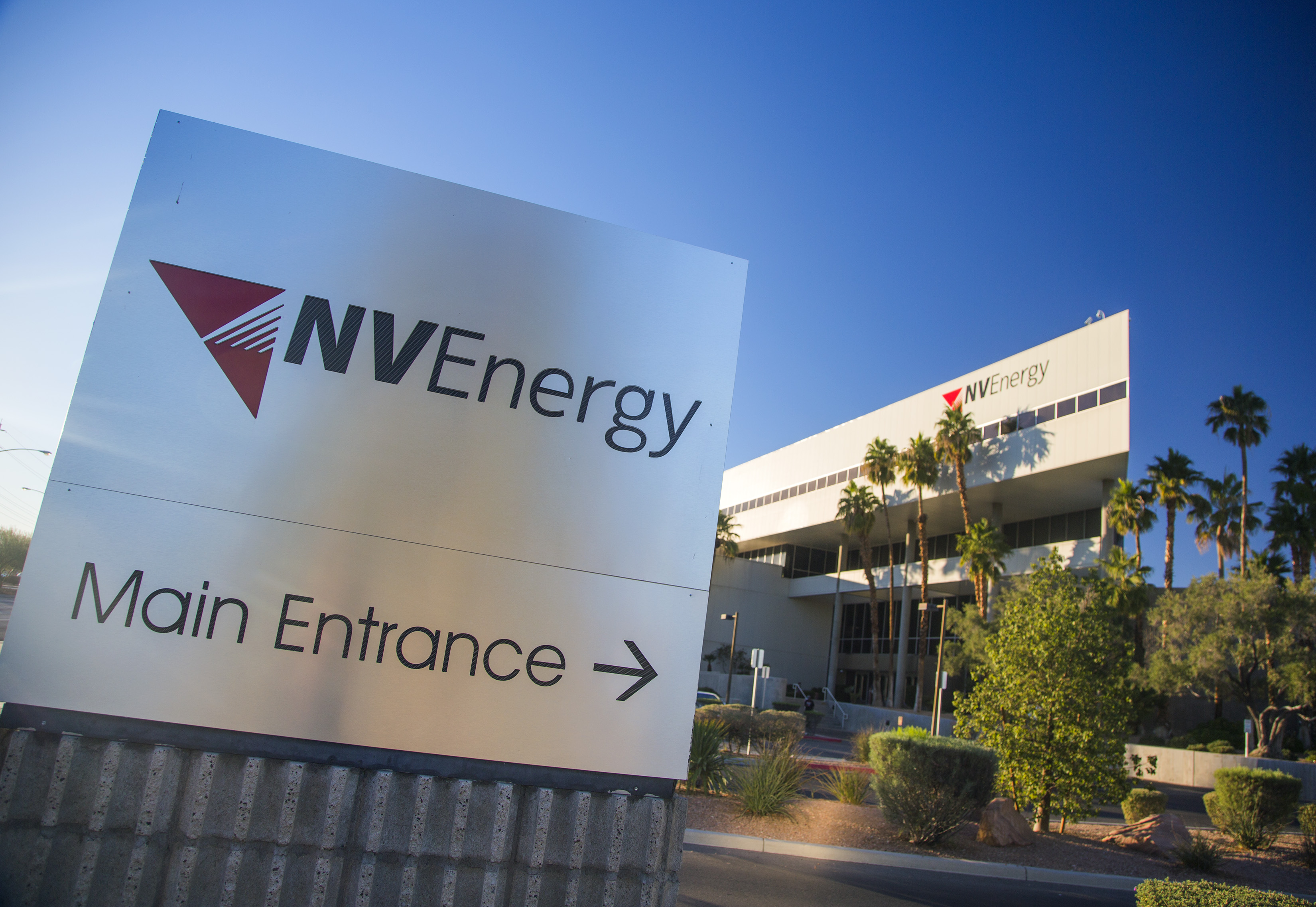Proposed NV Energy low-cost renewable rate for businesses will have impact on other customers

NV Energy’s proposed low-cost alternative pricing program for large customers considering an exit from the utility’s electric service will likely have a financial impact on its other customers.
Testimony submitted by NV Energy executive Jacky McGinley last week as part of the utility’s application for its proposed “GreenEnergy 2.0” rate (now called the “NV Energy Optional Pricing Program Rate”) indicated that residential and non-participating customers of the utility will face small cost increases over the next three years if the program is approved and created.
The utility company announced its preliminary plans for the program earlier this month. It would allow some of its largest customers to apply and receive a reduced-cost rate for electricity powered by renewable energy. It’s an attempt by the utility to offer an attractive alternative to the increasing number of large customers filing to leave the utility’s electric service and purchase power from another provider.
According to the testimony, approval of the program and full enrollment will result in quarterly revenue shortfalls of $1.6 million, or $19.6 million over the life of the program. That means the impact of the program on residential customers of the utility who consume 1,100 kilowatt hours (the average American household uses around 867 kilowatt hours per month) will be an additional 22 cents per month in 2022, 45 cents per month in 2023 and 35 cents per month in 2024. That extends to an extra $3.54 on power bills in 2022, $5.43 in 2023 and $4.20 in 2024.
Non-residential customers who don’t participate in the program will also see a small change; 18 cents per month in 2022, 28 cents per month in 2023 and 21 cents per month in 2024.
Those price changes don’t exist in a vacuum; the utility said in a statement that the new solar projects would still result in lower costs across the board for its customers, but that the proposed program for its larger customers would result in a less dramatic rate decrease for customers than they otherwise would have seen.
“Rates do not go up as a result of this proposed new rate offering, which is derived from Nevada-based solar resources that benefit all of our customers and support Nevada’s clean energy goals,” an NV Energy spokeswoman said in a statement.
In his testimony, McGinley wrote that the pricing program won’t result in a “cost shift,” given that its existence is due to Public Utilities Commission approval of plans to construct six new large-scale solar plants that will add 1,001 megawatts of electricity to the company’s fuel supply. McGinley wrote that those projects will reduce “overall fuel and purchased power costs” by $135 million, but acknowledged that approval of the project “reduces some of the benefits” that would otherwise be received by other customers of the utility.
McGinley also wrote that adoption of the program would be in the public interest because it would still give non-participating customers the renewable energy portfolio credits and because it would keep large customers from exiting the utility, ensuring they “help pay for the long term cost commitments (NV Energy) has made to meet the state’s energy policy goals.”
In a previous “alternative analysis” submitted by the utility as part of the South Point Hotel and Casino’s exit application, NV Energy estimated that the full cost of all proposed departures from utility service would cost the remaining utility customers tens of millions of dollars in shortfalls.
The utility opened early enrollment for the rate program (which still has to be approved by the PUC) on March 25, and said in a press release earlier this week that the utility had received applications from 26 customers in Northern and Southern Nevada. It said the applicants included government and education agencies, gaming companies and heavy industrial businesses, but declined to name any of them to protect “customer privacy.”
The initial program will be capped at more than 940,000 megawatt hours of solar energy, including 565,000 megawatt hours in Southern Nevada and 375,000 megawatt hours in the North (a megawatt hour from solar can typically power between 700 to 1,000 residential homes). It will be available to customers who use more than 8,760 megawatt hours of energy annually — similar to requirements for an existing customer to be eligible to exit the utility’s service.
